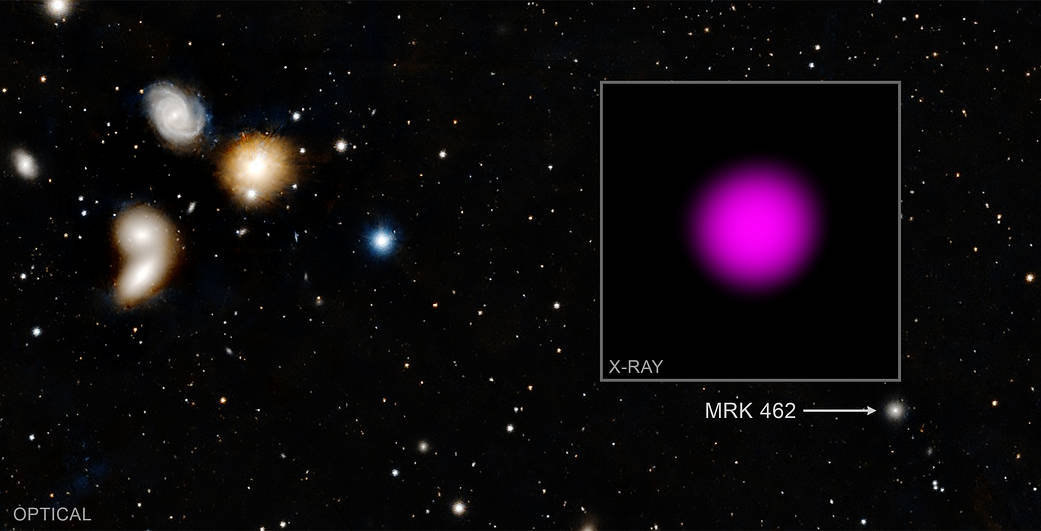Heavily buried supermassive black hole discovered in dwarf galaxy Mrk 462
The newly-identified black hole contains about 200,000 times the mass of the Sun buried in gas and dust in Mrk 462, a dwarf galaxy that contains only several hundred million stars - a hundred times fewer stars than our Milky Way which is home to a few hundred billion stars.

- Country:
- United States
Astronomers have discovered a heavily buried supermassive black hole in a small galaxy using NASA's Chandra X-ray Observatory. This discovery could help them unravel the mystery surrounding how the very biggest black holes grow.
The newly-identified black hole contains about 200,000 times the mass of the Sun buried in gas and dust in Mrk 462, a dwarf galaxy that contains only several hundred million stars - a hundred times fewer stars than our Milky Way which is home to a few hundred billion stars.
"This is one of the first times that a heavily buried, or “obscured,” supermassive black hole has been found in a dwarf galaxy. In larger galaxies, astronomers often find black holes by looking for the rapid motions of stars in the centers of galaxies. However, dwarf galaxies are too small and dim for most current instruments to detect this," NASA said in a statement on Monday.
In this study, researchers, led by Jack Parker of Dartmouth College in New Hampshire, used Chandra observatory to look at eight dwarf galaxies that had previously shown hints of black hole growth, but, only Mrk 462 showed the X-ray signature of a growing black hole. According to the researchers, the unusually large intensity of high energy X-rays compared to low energy X-rays, along with comparisons to data at other wavelengths, indicates that the Mrk 462 black hole is heavily obscured by gas.
"Because buried black holes are even harder to detect than exposed ones, finding this example might mean there are a lot more dwarf galaxies out there with similar black holes. This is important because it could help address a major question in astrophysics: How did black holes get so big so early in the universe," says Ryan Hickox, one of the researchers.
Big clues may be found in "mini" black holes. 👀Researchers using @ChandraXray discovered a heavily buried supermassive black hole in a dwarf galaxy. Find out how they are unraveling this mystery: https://t.co/ZJuLGgJGzc pic.twitter.com/o2q72r9XxO
— NASA (@NASA) January 10, 2022










